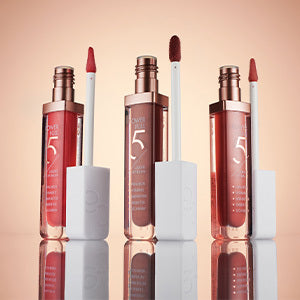How To Conceal Dark Circles & Blemishes Like A Pro

If dark circles and blemishes are getting in the way of the complexion of your dreams, you’ve come to the right place. You’re also not alone. These annoyances rank highest on the list of skin gripes for good reason–they’re easy to get yet hard to get rid of. Thankfully, anything is possible with the right products and tips, and we’ve got the scoop on which ones are up for the job.
So, whether you’re here to learn how to cover dark circles or how to conceal blemishes, help is here.
Concealers vs Correctors

While most of us are familiar with concealers and how they work (essentially like a magic beauty genie that makes pesky skin issues disappear), many of us don’t quite grasp what correctors do or how to use them. Correctors are highly pigmented and typically come in three colors: green (to conceal redness), peach (to target blue on deeper skin tones) and yellow, (to hide purple on those with fair skin tones). The goal of correctors is to neutralize your skin and prep it for base or complexion products, like concealer and foundation.
“Concealer is a makeup product that covers imperfections on the skin such as acne, and discoloration,” says Emily Gray, a Nashville-based celebrity makeup artist. It’s also skin-toned and comes in liquids, powders, or creams.
How to Cover Dark Circles
Dark circles can be the result of many factors like genetics (gee, thanks mom!), a result of too many late nights or even due to excessive eye rubbing from allergy season (if puffy eyes are an issue, check out this blog). To cancel them out, reach for the peach or yellow-toned corrector.

For those with mild dark circles, use a lightweight yet highly coverage corrector formula. If you need substantial coverage, go with a creamy corrector in a pot or palette, which is more concentrated. Pat your corrector onto your skin using a light tapping motion for best results.

Now, it’s time to apply concealer. Choose a shade that best matches your skin tone (the same goes for your foundation) and formula based on the coverage you need. It’s also smart to tailor your formula to your skin type. “With mature skin, the more creamy and hydrating the concealer the better,” says Gray. “It is also beneficial to get a thinner formula that is lightweight. When you age, your skin tends to get less oily, more dry.”
The best way to apply your concealer overtop of corrector is with a fluffy brush for optimal blending and diffusing. Lastly, apply a light dusting of this viral, yellow-based loose powder to set your makeup in place.
TIP: Make sure your skin is properly moisturized so your product doesn’t settle into fine lines and remember, less is more when it comes to covering dark circles.
How to Cover Blemishes

The steps for hiding your blemishes are not all that different from concealing dark circles. The main difference lies in the type of concealer you need. Here, you’re going to want to use a formula with more staying powder as thinner concealers tend to slip off blemishes more easily. Our pick is this high-coverage formula that lasts for 12 whole hours.
Since your fingers have natural oils in them, it’s best to apply concealer to blemishes using a small brush. Stipple it on so the product fully adheres to the blemish and then set it (and forget it) with translucent powder as your final step.
Apply Eyeliner Like a Pro
There is no gatekeeping these pro eyeliner techniques



